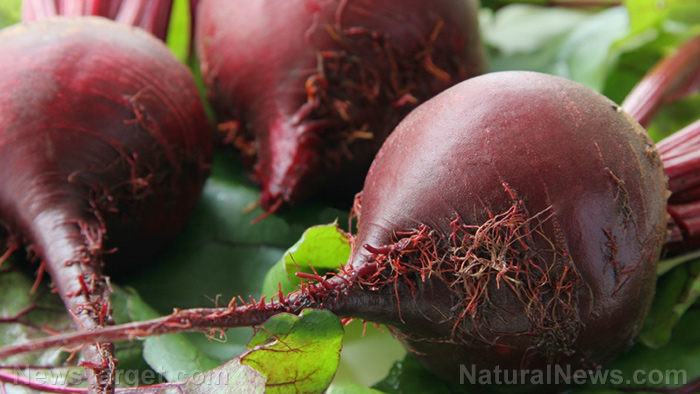Analysis of broccoli florets reveals what phytochemicals are present in young and mature broccoli
10/12/2020 / By Evangelyn Rodriguez

Broccoli (Brassica oleracea) is a cruciferous vegetable closely related to Brussels sprouts, cabbage, cauliflower and kale. A rich source of essential vitamins and minerals, broccoli is also known for its abundance of antioxidants, which help fight free radicals and prevent chronic disease. But the most notable compounds present in broccoli and other cruciferous vegetables are the sulfur-containing glucosinolates (GSLs), which are converted inside the body into isothiocyanates (ITCs). ITCs have anti-cancer properties and are capable of not only inhibiting the growth of cancer cells, but also inducing apoptosis, or cell death.
In a recent study, South Korean researchers investigated the changes in GSL concentration, total phenolic and flavonoid content and antioxidant activities that occur during the development of broccoli florets grown in open field conditions. Previous studies have found that all of these are influenced by various factors, such as plant genotype, growing season, plant parts, fertilization levels, temperature and irrigation, postharvest storage conditions, developmental stages and even cultivation year.
The researchers reported their findings in an article published in the Chilean Journal of Agricultural Research.
Broccoli’s phytochemical content changes with maturity
To understand the influence of developmental stages on broccoli’s phytochemical content, particularly that of GSLs, the researchers studied the florets of six broccoli (Brassica oleracea) genotypes at three different inflorescence developmental stages. They found that the presence of specific compounds and the level of antioxidant activity of broccoli significantly varied between different genotypes and developmental stages.
Of the eight GSLs known to be present in broccoli, the researchers found only five in all the genotypes they studied at certain developmental stages. Toward the later stages, the researchers noted that the levels of glucoraphanin (GRA), a major GSL, significantly increased. GRA is converted into sulforaphane inside the body by the enzyme myrosinase. Besides preventing cancer, sulforaphane also helps reduce inflammation, promotes liver detoxification, improves heart health and treats peptic ulcer disease caused by Helicobacter pylori.
Meanwhile, glucobrassicin (BRA), another known cancer-preventive agent, showed a reverse accumulation pattern in broccoli, with the highest levels detected in very young broccoli. The concentrations of other minor GSLs varied depending on the broccoli genotype.
The researchers also reported that the vegetable’s total phenolic and ascorbic acid (vitamin C) content also increased significantly as the florets matured. This observation was true for all the studied genotypes. However, a relatively higher increase in ascorbic acid (65.8 to 100.9 percent) than phenolic content (10.2 to 31.2 percent) was observed in broccoli.
The vegetable’s flavonoid content exhibited a cultivar-dependent accumulation pattern throughout the developmental stages. Its antioxidant activity, meanwhile, increased with inflorescence development. This increase was higher than the increase in broccoli’s total phenolic content but lower than the increase in its ascorbic acid content.
The researchers got the highest value for GRA, ascorbic acid, total phenol and antioxidant activities for the 09FA-M295 cultivar at the commercial stage. Regardless of genotype and inflorescence developmental stage, broccoli’s total phenolic content showed the highest correlation with its antioxidant activity, followed by ascorbic acid and flavonoids. GSLs showed a non-significant correlation with antioxidant activity.
Based on these findings, the researchers concluded that the phytochemical content of broccoli varies depending on its developmental stage.
The health benefits of eating broccoli
Broccoli is a great superfood to add to any diet. It contains high amounts of fiber, vitamins C and K, phosphorus, potassium, folate and antioxidants like beta-carotene, lutein and zeaxanthin. This nutritious vegetable also offers plenty of health benefits. Here are some of them:
- Helps improve bone health
- Boosts immune health
- Improves skin health
- Supports healthy digestion
- Reduces inflammation
- Lowers the risk of diabetes
- Lowers the risk of atherosclerosis
Broccoli is a rich source of essential nutrients and phytonutrients that help combat life-threatening diseases like cancer and heart disease. To enjoy its many health benefits, incorporate this vegetable into your daily diet. Steaming broccoli is the best way to cook it as this method doesn’t reduce its nutrient content.
Sources include:
Tagged Under: antioxidants, broccoli, food cures, food is medicine, food science, Fresh, functional food, glucosinolate, nutrients, organics, phytonutrients, research, veggie
RECENT NEWS & ARTICLES
COPYRIGHT © 2017 FRESH NEWS




















